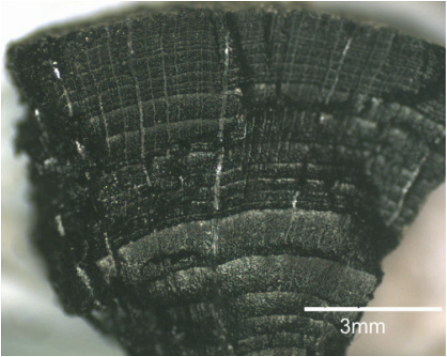Overview of Charcoal Analysis

Charcoal analysis consists of identification of charred wood through consultation of wood atlases and modern reference materials. Identification is carried out under a light reflective microscope after 'fracturing' charcoal fragments into three 'sections.' The cellular structures in live wood are for the most part, preserved in charcoal. Refinement of identification can be possible within a particular flora when complementary evidence limits the tree type to one species in a particular area, but often identification to genus, or only family level is achievable. Interpretation of the results includes consultation of historical sources (if any); other archaeological information; and modern phytosociological data. We can use charcoal for a range of archaeological purposes: carbon dating, timber consumption, fuel consumption, and it can even help us to understand aspects of ancient technologies, especially those requiring fire.
Photo (Veal): transverse ('cross') section of beech from Pompeii
associated with iron working in the House of the Surgeon
(1st c. BC). Note growth rings are dense, indicating likely old,
and slow-grown wood. (Veal)
Photo (Veal): transverse ('cross') section of beech from Pompeii
associated with iron working in the House of the Surgeon
(1st c. BC). Note growth rings are dense, indicating likely old,
and slow-grown wood. (Veal)
